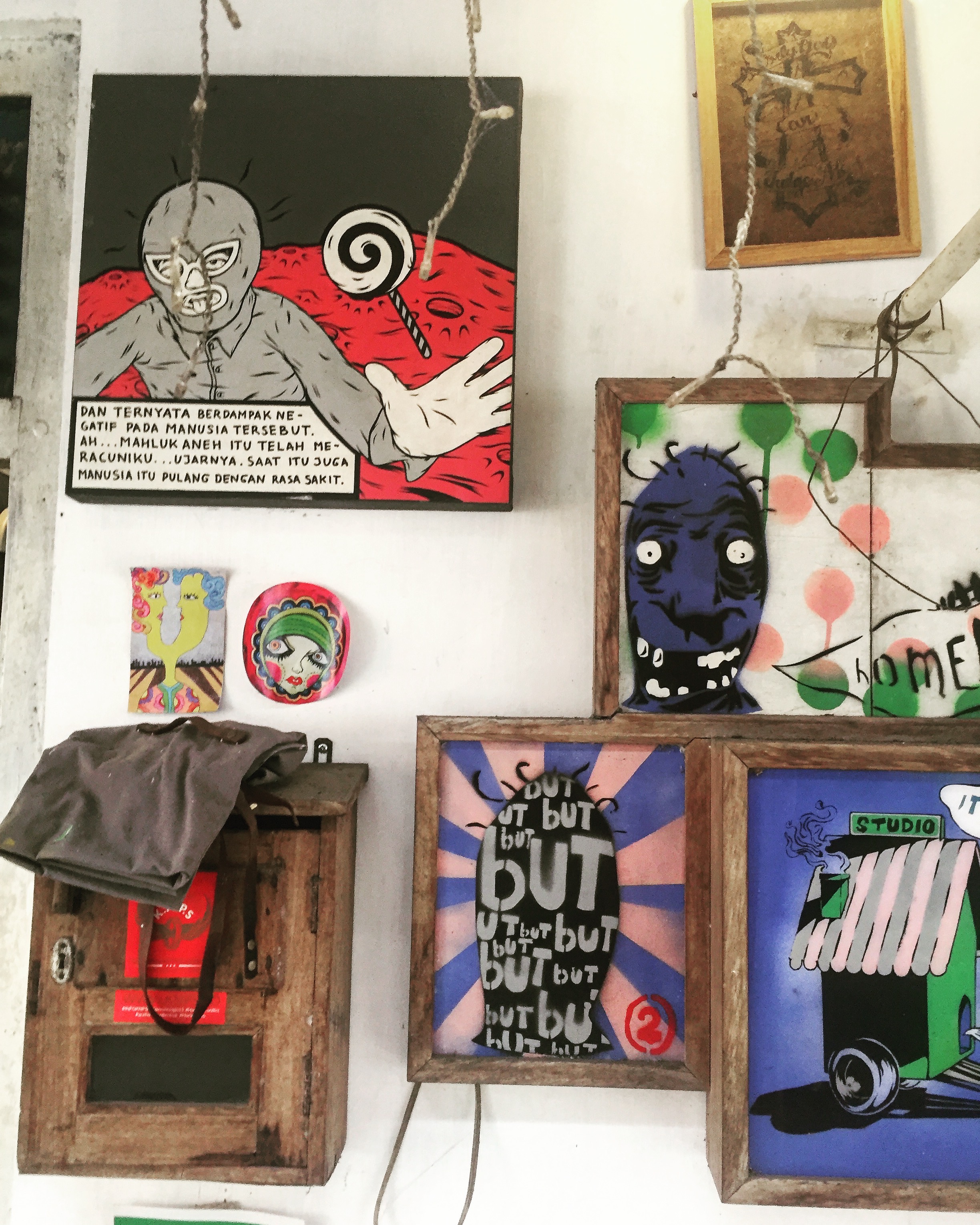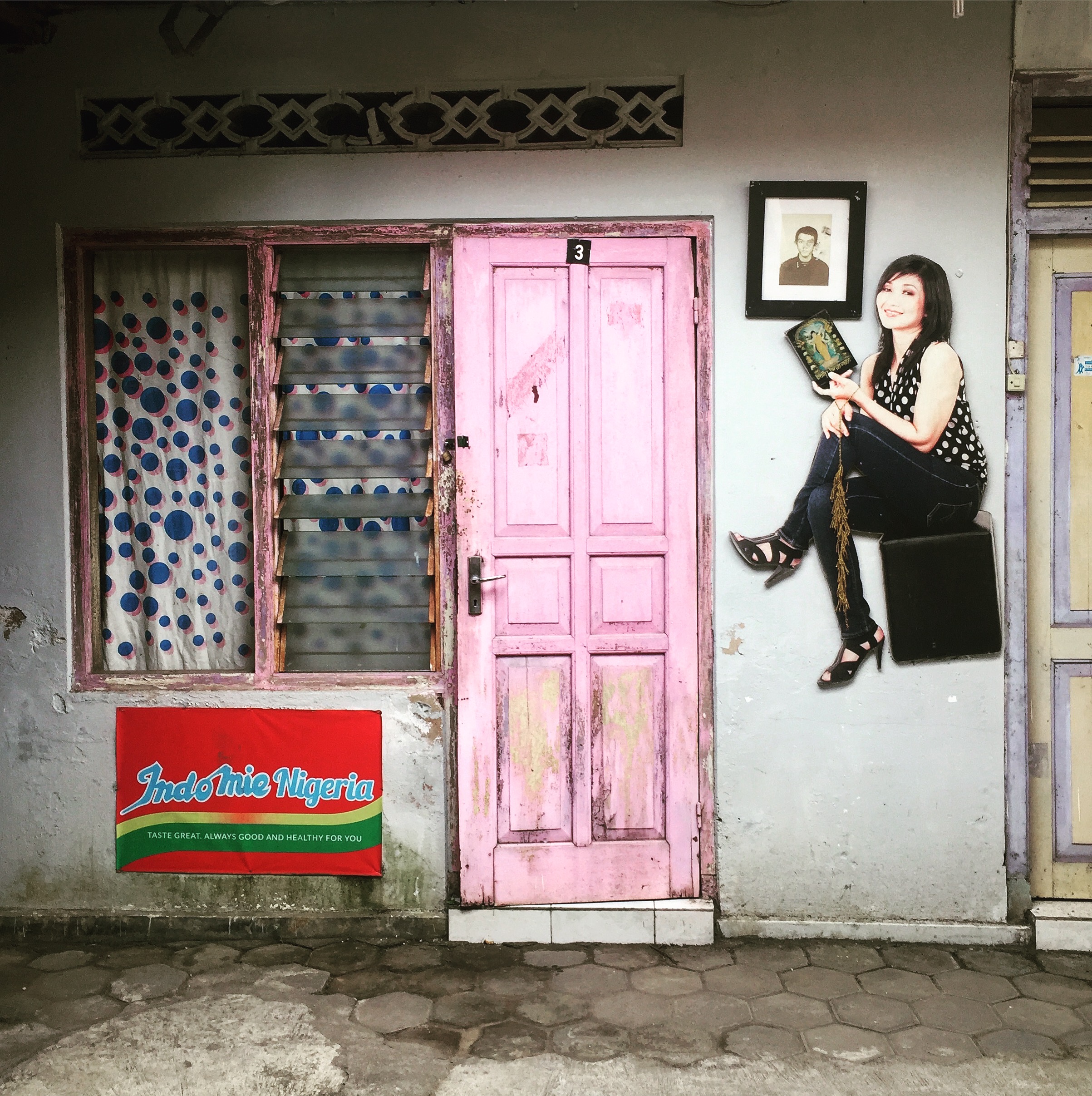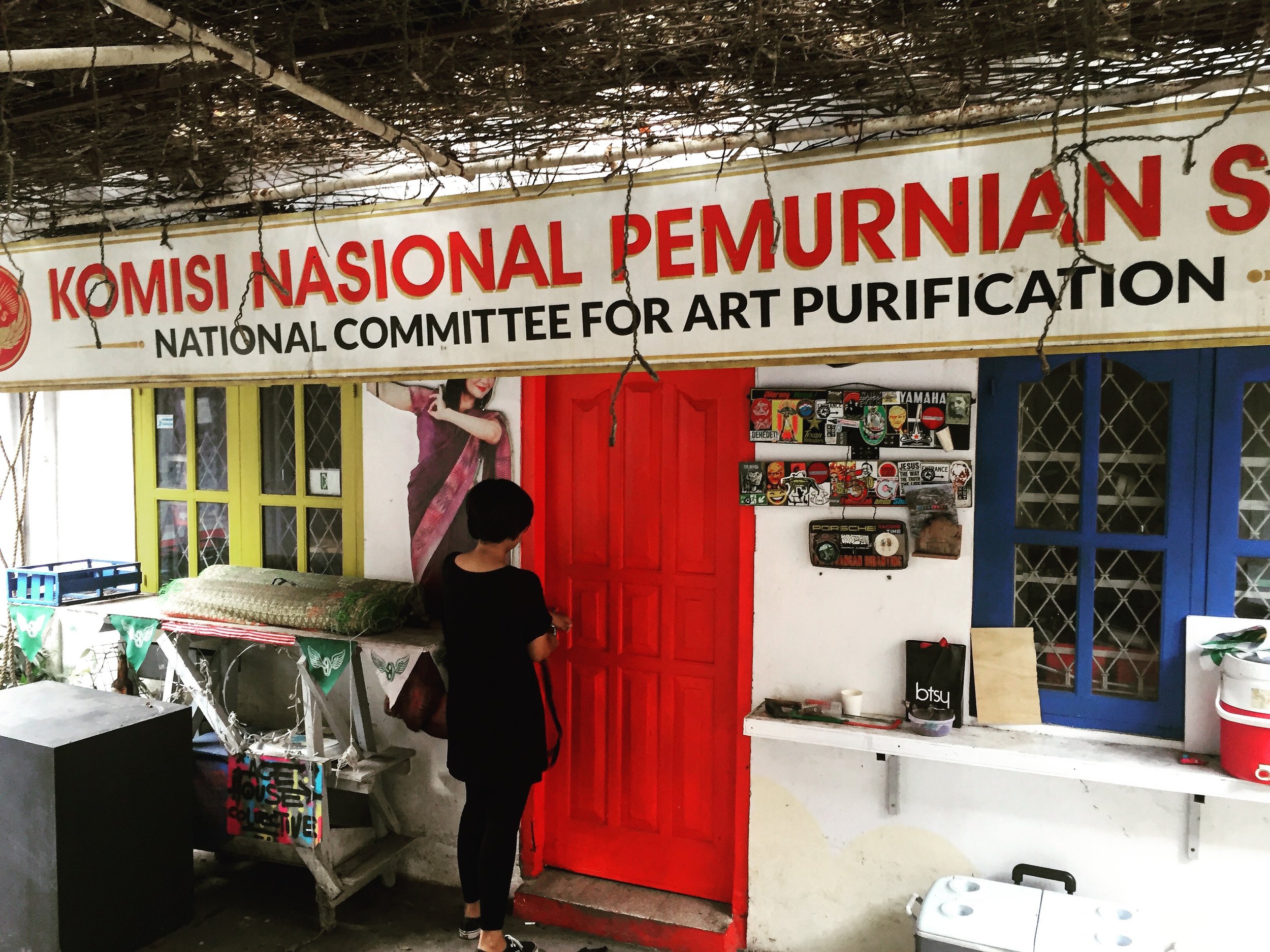Youth and Culture in Yogja
Indonesia is a country with many young people: 66 million (or 25% of the population) are between the ages of 10 and 24. Considering the growing inequity gap, it’s an especially important time for the country to invest in education, youth development and job creation. Its never been a more complex and exciting time to be young. One of the biggest changes is the extent to which young people can engage with each other and be exposed to trends in the rest of the world through technology, and an increased emphasis on visuality. This is a double edged sword, it opens possibilities, but it also means youth are more susceptible to negative messaging. In this piece we will connect with three projects in Yogja that are youth focused in some form, using culture and symbolism as a fulcrum to work with the consciousness of youth: Kunci's School of Improper Education, The Ace House Collective, and Ketjilbergerak.
Kunci and the School of Improper Education
The Kunci Cultural Studies centre is a research collective "preoccupied with critical knowledge production and sharing through means of media publication, cross-disciplinary encounter, action-research, artistic intervention and vernacular education within and across community spaces." Started in 1999 it has always been interested in the point at which theory and practise intersects. It runs a myriad of activities, has a library space and an open membership, and as we saw last week, a flat structure, with no leadership. A concern with education and young people has led it to develop, as one of its core projects at present, an educational project: The School of Improper Education. The concept which various members have been researching for a number of years, is currently in beta testing: "The school is an experiment on the sustainability of (material and immaterial) economy of organizations. We want to test the idea of school as a garden of ideas, a laboratory of affects, and a space where new ideas clash and coalesce….We want to study together, while interrogating the meaning of togetherness."
It will be exciting to see what Kunci develops in its final iterations, but judging from its previous work it is bound to be radical and transformative. Interestingly Kunci is in many respects building on the strong engagement in the city with radical alternative education, notably the work of Ki Hadjar Dewantara. Dewantara established a new educational system called Taman Siswa (Garden of Students). It was developed, during colonialism, in response to the lack of education for ordinary Indonesians. With a strong focus on creativity, it was influenced by a range of educationalists with alternative views on education including Montessori, Steiner (Waldorf Schools) and Tagore. Dewantara would later serve as Indonesian's first Minister of Education and Culture in the new countries cabinet and his ideas would influence the Indonesian educational system for decades, even though it was watered down during the dictatorship.
The Acehouse Collective
The Ace House Collective are like many other art collectives in Yogja, a group of (male) arts school graduate who banded together as friends with shared similar interests, in order to sustain an arts practise. In this case the issues holding them together is a fascination for popular culture - gaming, comics, graphics, music and social media. They mostly interested in fun, in stark contrast to the other collectives we met last week. Their work does have a strong relational element though - they mediate this through playful interactions that connect people with each other, rather than try to do any overt social justice orientated work. Their performance art piece at the Yogja Biennale for example was a "purification" project set up at the entrance of the show, where patrons are registered and get drops placed into their eyes and ears to "purify" them for them experience of experiencing art.
ACEHOUSE MART
They have a small space in the south of Yogja, close to RuangMes56 whom they regard as mentors. Like their heros, they also have a female administrator who ensures the project stays on course. The space was turned partly into a local supermarket since the last Yogja Biennale. Branded as the Acehouse Mart, local basic home products are sold (at a slight premium so not to compete with other small businesses) alongside art works influenced by popular culture. Acehouse also host a popular street food vendor outside their space, which brings customers to the venue during the day. In this way they attract a local community into their shop, who are curious, and may not have entered into an arts space before. Often they find that people feel intimidated by the idea of art, believing they are "not intelligent enough" to get it. But they find that once people understand what they are doing, they will buy basic items at an inflated price as an act of support and are return visitors to exhibitions and events. Acehouse also works with brands, such as sneakers and clothing labels and have created some fun caps and T-Shirts as products. This furthers their interest in blurring the boundary of art making and brand making, but it also brings in additional resources. A foray with a radio station concept sees them doing short instagram broadcasts at irregular times, taking forward their interests in commenting on pop culture through mediums favoured by the young.
In its practise then, by working with the ways in which young people interact with media and their interest in specific elements of visual culture and technology, Acehouse is successful at initiating fresh ways to repositioning the artist in Indonesian society, reaching out, as brands do today, to young people, inviting them to insert themselves into the art works, and subverting the norms of the exhibition.
Ketjilbergerak
Ketjilbergerak meaning "Small moves" (small but always moving) is a much more political project, and it works in a very soft, yet powerful manner. As its name suggests, it functions by making small changes, often through long processes of engaged dialogue with and between young people. Its an empowerment project that moves carefully, taking people along, morphing as its philosophies are adjusted and strengthened by the engagement with many others. It describes itself as a youth-based creative community and social movement. It was started in 2006 by a couple, Greg and Vania when they were young students at university. Its still run by them (they are now 30), though one would be hard pressed to find any material that says this is the case. This strategy of a faceless project allows young people to project their hopes and dreams onto the initiative and to own it. Their tagline "Those who are young, brave, creative and independent are Ketjilbergerak" has been adopted by many young people who intuitively identify with the projects central ideas.
When the project started, it was a reaction to the disconnect between the education given to them as students and realities of society (and what brought it there). The project started on their campus, first with a zine and later with study groups, discussion forums and more zines. Overtime it began to focus heavily on art and creativity, with a strong emphasis on inter-disciplinariity. Poetry, visuals and music were and remain significant elements, key as they are to tapping into symbols, and as mediums for storytelling. The idea of participation, moving beyond a consumption driven world, where there is a sense of contribution began to drive the project.
By 2012 it became a fully fledged youth project, after it had discovered it was consistently attracting many young people to its events. The team began by asking the youth what they needed. Out of this dialogue, their first project, a collaborative mural programme began. Murals are of course common to youth initiatives because of their simplicity, immediacy and its public nature. However Ketjilbergerak has never stood still with one media. It has over time expended into a number of "divisions" including Street art, Music, Design, Media and Research. It also has a High school project and kampung networks. Through these various projects a multitude of creative projects have emerge. The design teams have made products for sale, the kampung network a festival and there have been a number of songs produced and distributed online. Underpinning the deep critiques of their material is a joyful life affirming enthusiasm and an infectious positivity. This approach can been seen in their video "Before All Spaces Are Measured By Money" with its catchy tune and its bouncy young people - its conscious lyrics are a strident call for environmental and land reform.
SEBELUM SEMUA RUANG DIUKUR DENGAN UANG (Before All Spaces are Measured with Money)
Tanah-tanah dikaplingkan privatisasi (Lands are being plotted and privatised)
Keruh, keruh, keruh (Murky, murky, murky)
Ruang-ruang digadaikan dan dipagari (Spaces are being mortgaged and fenced)
Penuh, penuh peluh (Full, full of sweats)
Kami butuh ruang bermain, bermain apa saja (We need spaces to play, playing anything)
Kita butuh ruang belajar, belajar apa saja (We need spaces to learn, learning everything)
Sebelum semua ruang diukur dengan uang (Before all spaces are measured with money)
Sebelum semua lahan dibangun kota-kota (Before all lands turn into cities)
Bumi wahana kita tumbuh (Earth, is our space to grow)
Bukan wahana eksploitasi, pengerukan, kepemilikan, perang harga (It is not for exploitation, excavation, possession, and war price)
The work of Ketjlbergerak has not gone unnoticed. They have received commissions for art projects and the team have acted as consultants, and spoken at events. They are increasingly being asked to run workshops and pogrammes in other cities. Young people seek them out, fascinated by a language - visually and orally that speak to them. This in turn has led some aspects of government to take notice of their work. They have never accepted sponsorships and have attempted to be function without dependency. When money is needed the group will create products and sell them. The basic running costs of the organisation are still provided by Greg and Vania who prefer to "live modestly" and funnel whatever they earn in their other work as translators, into the decade old initiative. Key to their success as a team, leading the project quietly from behind, is to act humbly, "listen a lot" and make decisions collectively. This positive and switched on young couple and the many youth in the collective's divisions, show that deep commitment, careful and slow engagement, and a high level of empathy can make huge impacts in empowering young people to think critically and act positively. Their genre crossing collaborative projects, rooted in the language and mediums of youth today, speak deeply those who are both is core audience and drivers.
Conclusion
While Yogja may be a poor city in terms of money, it is a rich city in terms of ideas, creativity and social capital. The city's dense cultural ecosystem and many supportive arts institutions covering a wide variety of disciplines, is an inspiration on many fronts. Its particularly exciting to see the diversity of ideas and forms that the city has spawned and the cultural sector's fierce independence in the face of limited resources and a challenging context. The three projects mentioned above dealing with youth, conclude a three part series on Yogja, and demonstrates the constantly adapting and advancing cultural sector in a dynamic city.









